One archetypal, romantic vision of New York City is filled with long-legged women. Each is wearing a unique but equally glamorous outfit. She’s strutting down Fifth in pumps. How does she glide so gracefully over the grates in those skinny heels? Bill Cunningham is largely to thank for this casually elegant idea of the city. The legendary street photographer, most well known for his regular, post-1970s columns in The New York Times, proposed that there existed a bit of the fashion mythos in each passerby, adorned as they were in furs and discount dresses. “We all get dressed for Bill,” Anna Wintour famously said, solidifying the conception that when fashionistas awoke and put on their day’s garb, it was Cunningham’s lens and sensibility they hoped to impress.
Cunningham passed in 2016, and with him went a bit of the city’s drive to dress up. The mid-2010s saw the rise of normcore, an aesthetic devotion to basics and blatant reaction to the Y2K spirit of excess. Then, just as the tide turned towards 1980s revivals and luxury streetwear, as Virgil Abloh became a god amongst men and logomania was just reaching an almost unbearable fever pitch, the decade came to an end. And, well, you know what happened next.
We all went inside. At the most, we could dress for coworkers and classmates who would gaze half-heartedly upon the upper third of our bodies. Or, we could put on an elaborate gown to sit on the couch and try our best not to riddle it with wine stains. But really, the sudden popularity of luxe sweatsuits was undeniable proof of our unwitting descent. Still, we rebounded with a ferocity, once unleashed back outdoors. Avant-gardism became the new wave. People were going out, not just in their best clothes, but their weirdest. The pandemic had broken down every other social construction; why not throw out the fashion rule book too? To not wear white after Labor Day, to not mix black and blue, to sublimate oneself to Coco Chanel’s fascist ideals of minimalism, these were now challenges to be met with unbridled zeal. Luckily, another New Yorker had tasked himself with capturing it all on film.
Johnny Cirillo, better known online as WatchingNewYork, shot his first fashion photos the day Cunningham died. “It felt like a way to honor him,” he tells me, when we meet up in SoHo. His small tribute turned into an all-out sensation, with well over a million followers across social media. I want to watch him work. The sun is out on a Friday, something I mistakenly thought would aid his photography (he actually prefers to work when it’s cloudy) and my biggest fear is that I won’t be able to recognize Cirillo when he shows up in front of Fanelli’s.
In his quest to make visible the spirit and style of New York City, the photographer himself disappeared. Few photos of him are readily available online, and most have his face obscured by the body of a camera. Just as I’m getting really nervous, desperately trying to recall one of his identifying features, the most recognizable one of all rounds the corner: a large black camera is hooked around the neck of a man in double denim, jazzed up by the addition of a slouchy cap, retro glasses, and hipster-era beard.
We post ourselves on the corner across the street, and Cirillo’s eyes are already darting back and forth, watching for his first photo opportunity. This is his forte, from mid-morning light to sundown, every day he goes out. Between momentary photoshoots and taps on the shoulder from Cirillo’s friends on the street (artist Matthew Courtney was first to stop by) I try to glean a bit about this whole operation, and why the city seems always to be thirsting for more.
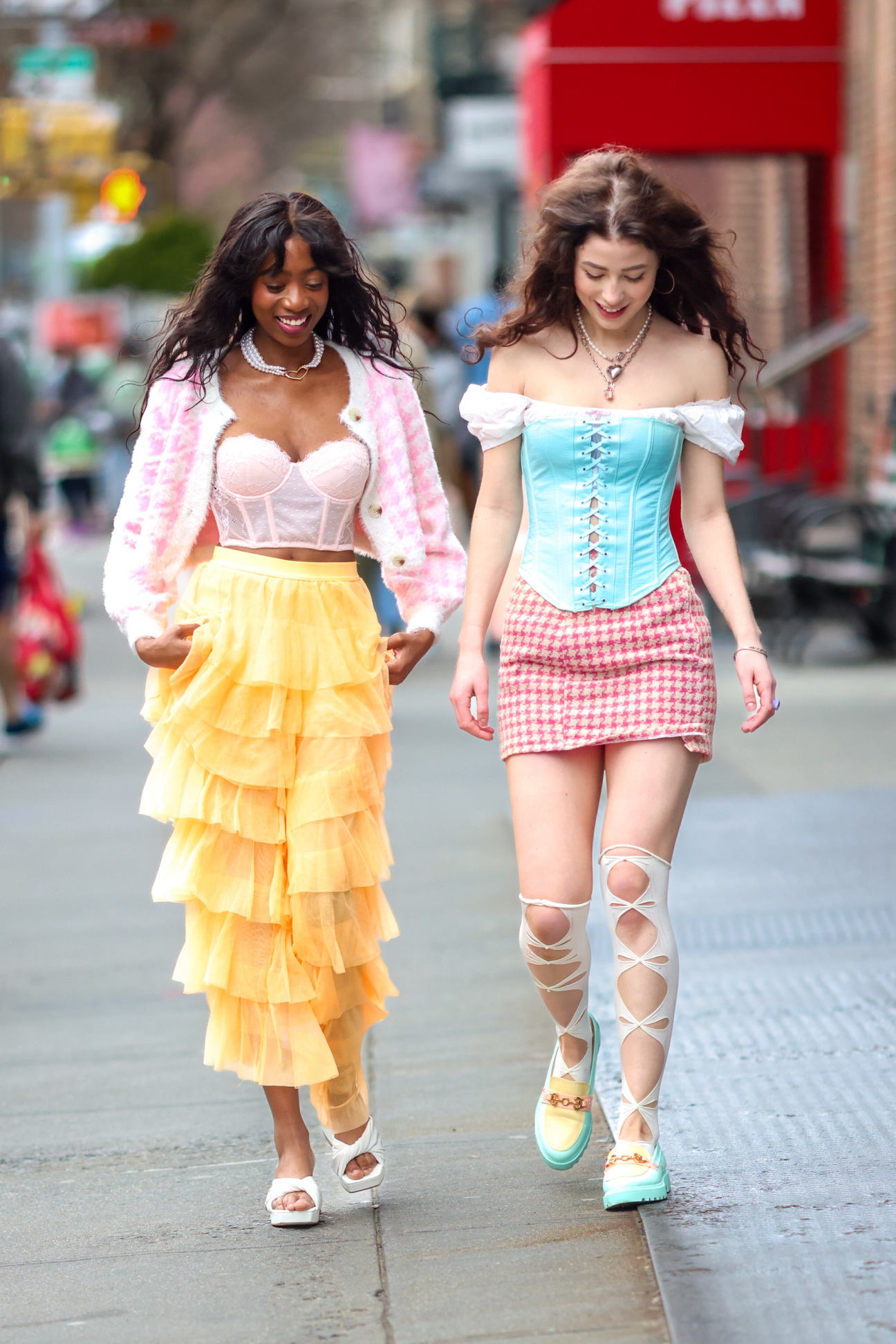
Johnny Cirillo: I just stand on a corner and I look as far as my eyes can see in every direction. When I see somebody, I get ahead of them, try to get squared up right in front of them and wait for them to approach. It’s not so crazy. Sometimes it’s just confidence, the way someone’s carrying themselves.
Sophie Lee: I feel like street photography is really coming back right now, even if it’s just TikTokers stopping people to ask people about their outfits.
JC: That’s where we’re at in the world. We’re interacting with each other more, which I think is nice. There’s something refreshing about a human to human experience, when you catch somebody off guard. That’s what I really like about it. Nothing’s set up, it’s just people coming out of Trader Joe’s or whatever, natural. I usually do laps; I’ll zigzag. Getting dressed is a way for people to express themselves. When we’re inside for a year, I think it was a way for people to really make up for lost time, by dressing in a really exotic or flashy way.
SL: You started doing this the day Bill Cunningham died, so it’s been a while now.
JC: Yeah, 2016 if I’m not mistaken. I’ve been doing photography since the ‘90s. I was a wedding photographer, but I always loved what he was doing so much. On the day that he passed away, it just felt like the right thing to do. I didn’t think I was going to do it more than that one day, but I really enjoyed it, talked to some people, learned some things. I just kept on doing it. I did that for about a year before I shared any of them. I just used social media as an archive, a way to hold them for me, and people started following it. In my weird twisted imagination, it was my continuation of his work from my perspective. It was comforting.
SL: How do you see your work having changed since the beginning?
JC: Cunningham would shoot the majority of people from the side, so I did that for a long time. I learned that I enjoyed going head-on more. That’s the biggest change, if you go all the way back to the beginning. I try to keep everybody coming right down the barrel of the camera. It’s supposed to feel like you’re walking into the person.
Just then, a woman interrupts to ask Cirillo for directions to MacDougal street. Her phone is dead and she is clearly not from around these parts. He obliges, graciously, and pulls out his phone to try and orient the both of them. Despite having grown up in the city, “all over the city,” as Cirillo puts it, he doesn’t seem much better off than she is without the help of an app. To be fair, this isn’t Cirillo’s typical haunt. He lives in Brooklyn with his family, and usually shoots closer to home. Some have even started to think of him as “that Brooklyn fashion photographer,” though he makes his way uptown, downtown, wherever. Most likely, the simple audaciousness of anyone leaving Manhattan draws an inordinate amount of attention. Once the woman sets off to follow the line of Cirillo’s pointed finger, he’s already running back to his perch, his back pressed to the building on the corner, swiveling to look down each side of the block. Alas, he’s too late to catch a man in a stark white jumpsuit dragging a rolling speaker behind him, blasting some indecipherable ‘70s tune.
JC: Oh he’s moving too fast. Sometimes I get lazy and let them go.
SL: I feel like I would get really frustrated doing this if the perfect outfit came by and they were heading the opposite direction.
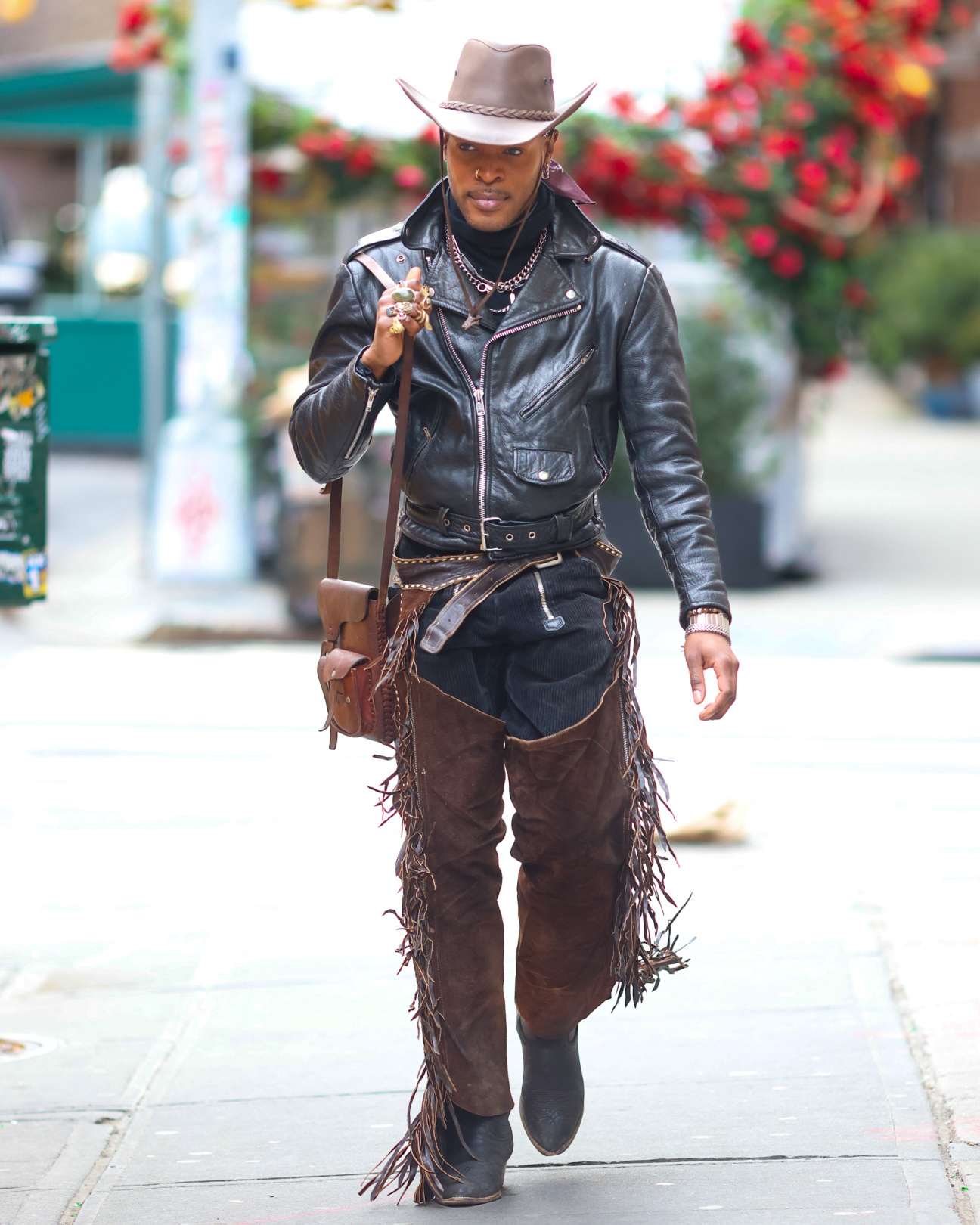
JC: It’s a lot like fishing. Sometimes you only get one shot at a really big fish. If you miss that big fish, it’s gone. Just like here, sometimes something enormous walks by you that’s just so beautiful and powerful and incredible and you get twisted up between the people and everything else and they’re gone. I’ll be out here every day and it’ll take me a month, three months, usually once a season, I get that miracle. It’s a combination of their attitude, their personality, their outfit, and there’s something so magnetic about them that you can’t look away.
SL: Have you gotten more confident over time just running up and stopping people? It must be hard.
JC: It really is, but when you do it for a long time, you notice that the majority of people are very open and very welcoming. People like talking. You do get jerks, but at this point, I’m in my 40s. I’ve been here my whole life. If I offended somebody, I apologize. I don’t want to bug anybody, but I’ve also had some really great, meaningful conversations with people. It’s always worth it to stop and talk,especially when somebody is dressed in a certain way and they’re expressing themselves. It’s a way to connect, and I think that’s really special. Wait a minute. Wait a minute! See this is the problem; they’re locked up. But if they go around these people with the dog…Now I’ve got a cop in the way.
Once again, Cirillo spots someone he deems worth photographing. This time it’s two girls, each dressed in an ethereal collection of pink and white garments, makeup dialed up to Euphoria-levels of elaborate. In the brief moment that the dogs and cops shift outwards, a line of sight unfurls itself to the viewer. That’s when he steps in. It’s over in a flash, and in the next moment he is already asking the girls if he can use their photos. He receives an enthusiastic “yes,” of course. Few turn down the opportunity to be noticed. The girls, perhaps in an attempt to return the favor, compliment his camera strap. “Thanks,” he replies, explaining that it was made by his mother from the fabric of his grandmother’s old gloves. And again, like one of the city’s many fluttering birds, Cirillo heads back to his perch, only this time, to find it occupied. An older gentleman stands where Cirillo had just been, looking refined in a cardigan and carefully placed scarf. A quaff of white hair completes his uptown air.
JC: Yo! Robbie Quinn? This guy does incredible portraits.
ROBBIE QUINN: Back at you.
JC: I kinda just learned about you recently and I’ve fallen in love. It’s dynamite.
RQ: Thank you very much. We’ve photographed some of the same people. It happens, but I mean, you’re killing it. The numbers, it’s like boom, three minutes later 18,000 likes.
JC: I don’t know how it happens. I try not to look at anything. Otherwise, I get wrapped up in shit. Also, I got a kid at home that needs all my attention. Are you shooting today?
RQ: Yeah, sometimes I’ll have the camera out, but a lot of times, I want to talk to them first. If I get a good vibe, then I’ll ask them. I don’t care what they look like. A lot of what I do is about the interview, and if they don’t have good energy, I don’t want that out there. A friend of mine just told me, “Oh, you wanna start shooting this kind of film.” What do we do? We go click click. The talent is your creativity and your inspiration.
JC: Well, the cameras just make it fun. They’re different mediums. Film is so different than digital. You gotta really be a little more patient. I’m ripping off, I think, a thousand shots a day. With film, forget it. I probably wouldn’t shoot more than 40 or 50. I’d be a little more choosy. I used to shoot film. I was really into it back in the 90s.
RQ: Are you a full time photographer?
JC: I was doing weddings and maternity and family photos. Now I just do WatchingNewYork.
RQ: And how are you generating income from that? Ads?
JC: Yeah, some ads. Levi’s will be like, “Can you find ten people that are wearing Levi’s and make a post?”
RQ: Wow, that’s fabulous.

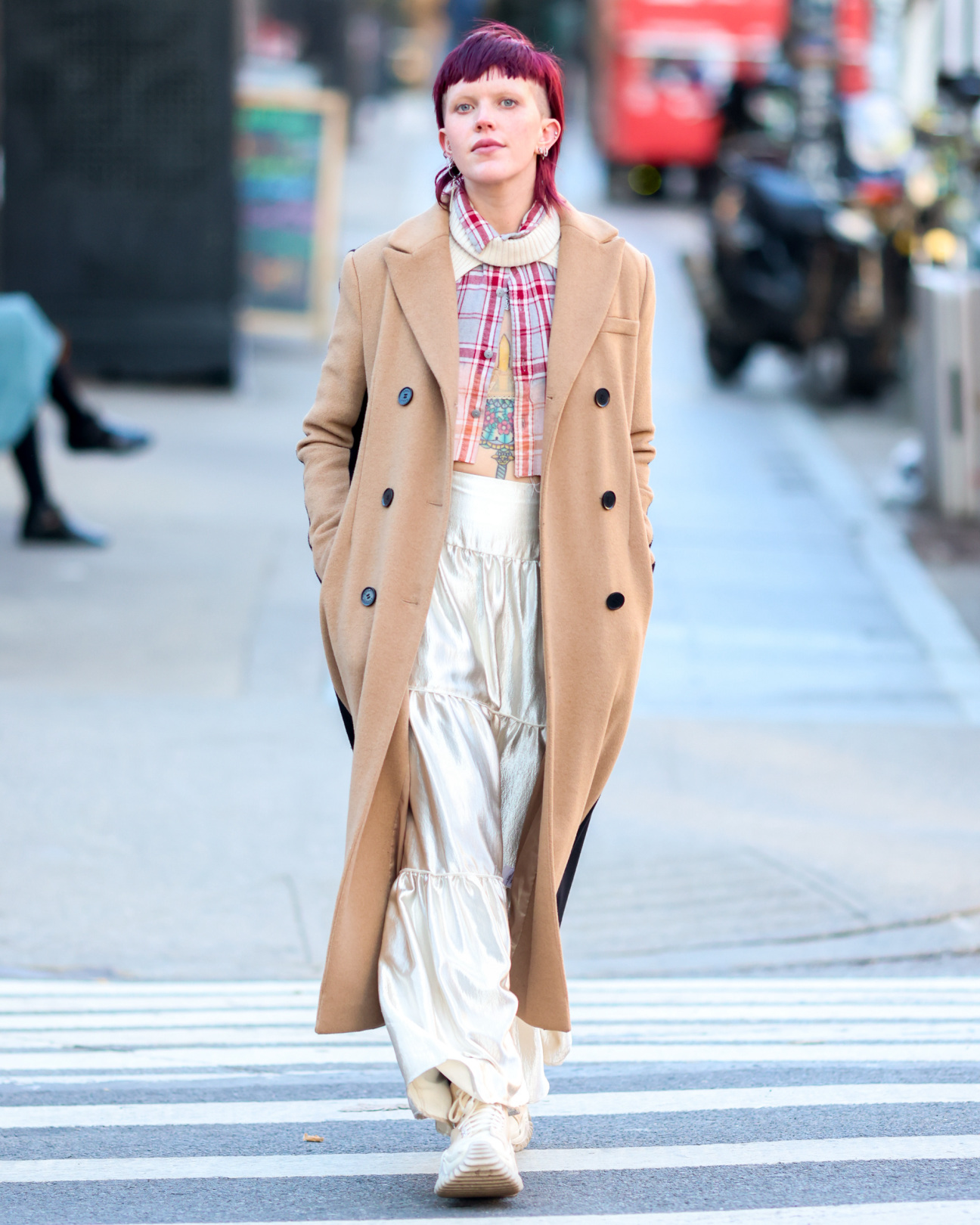
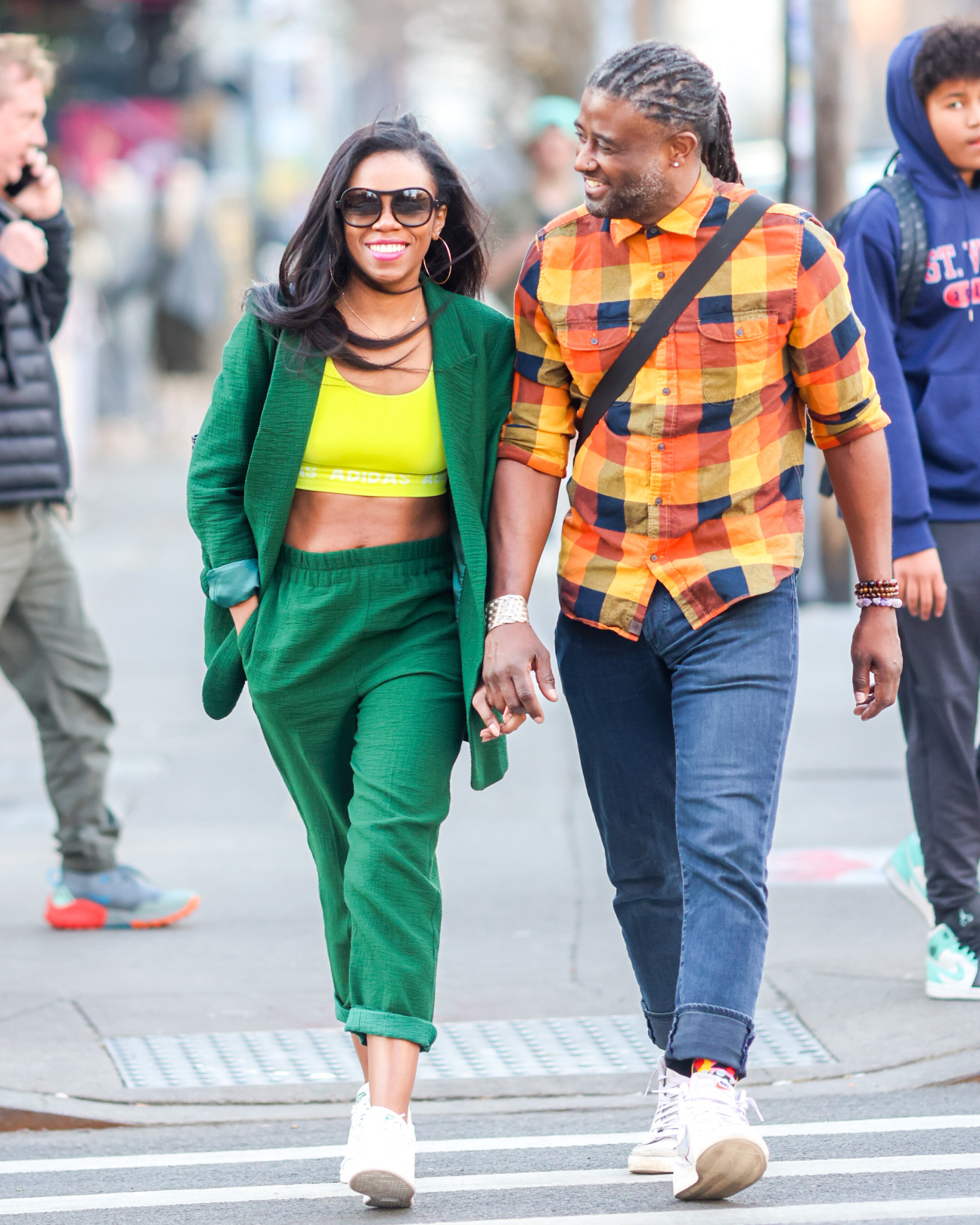
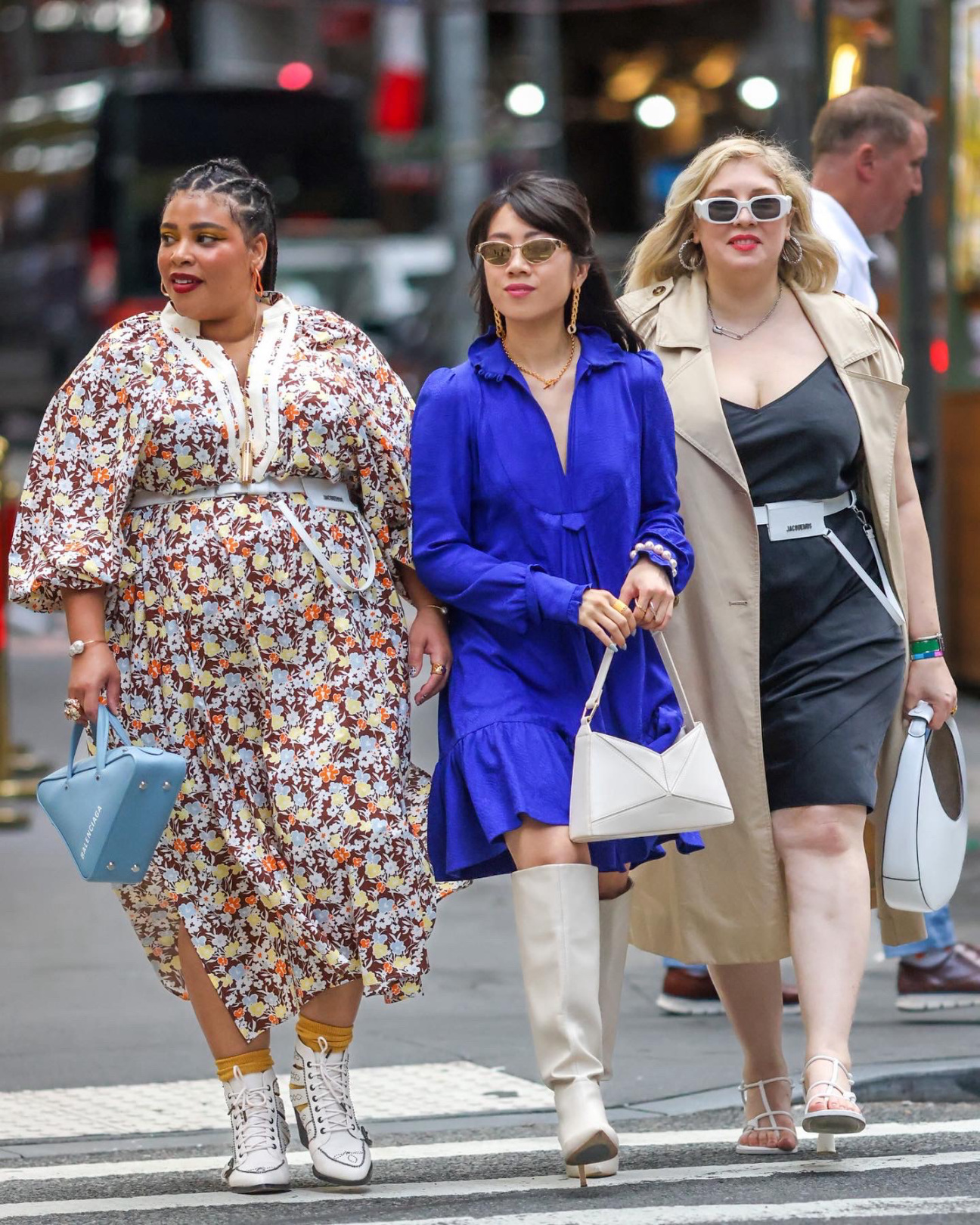
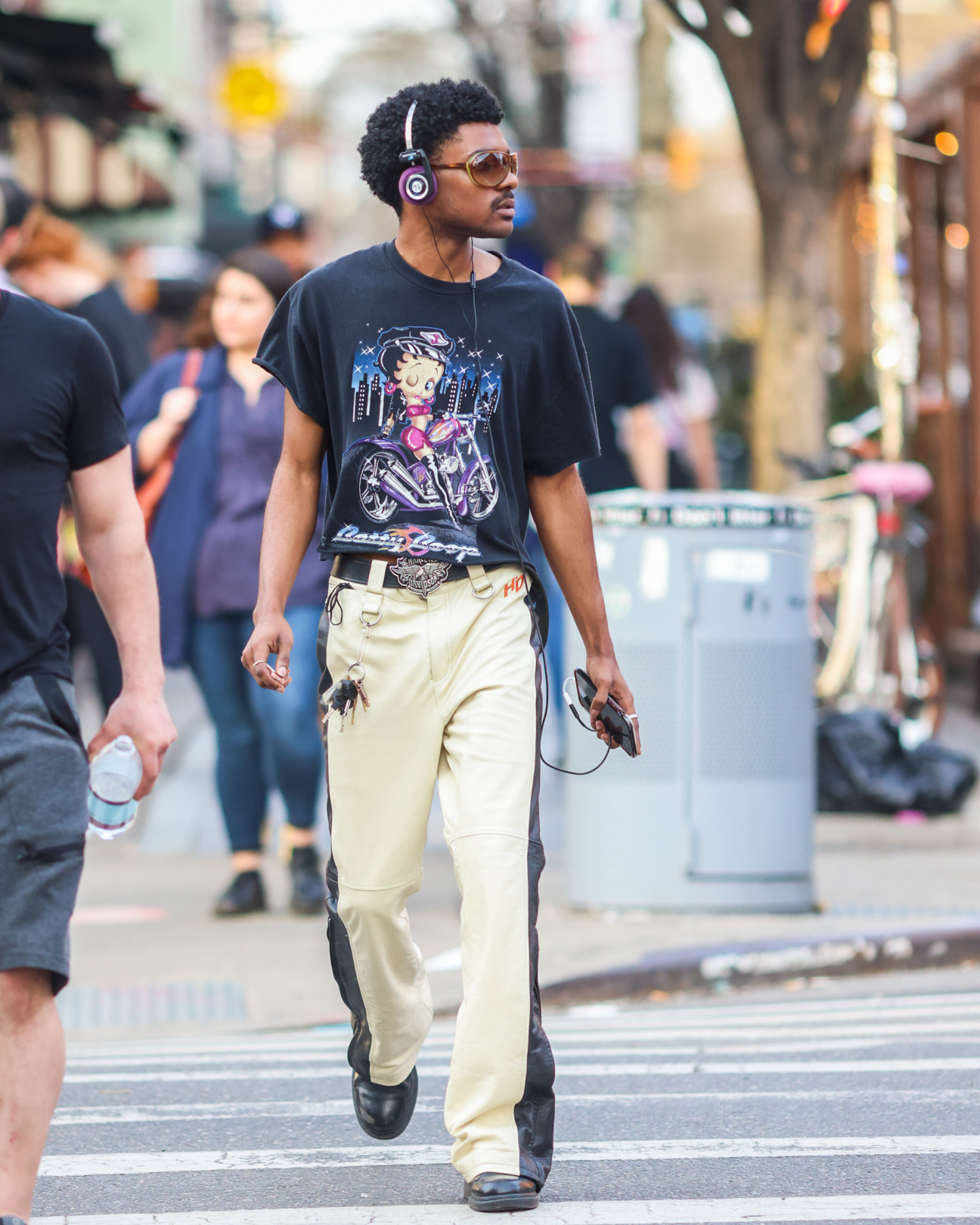
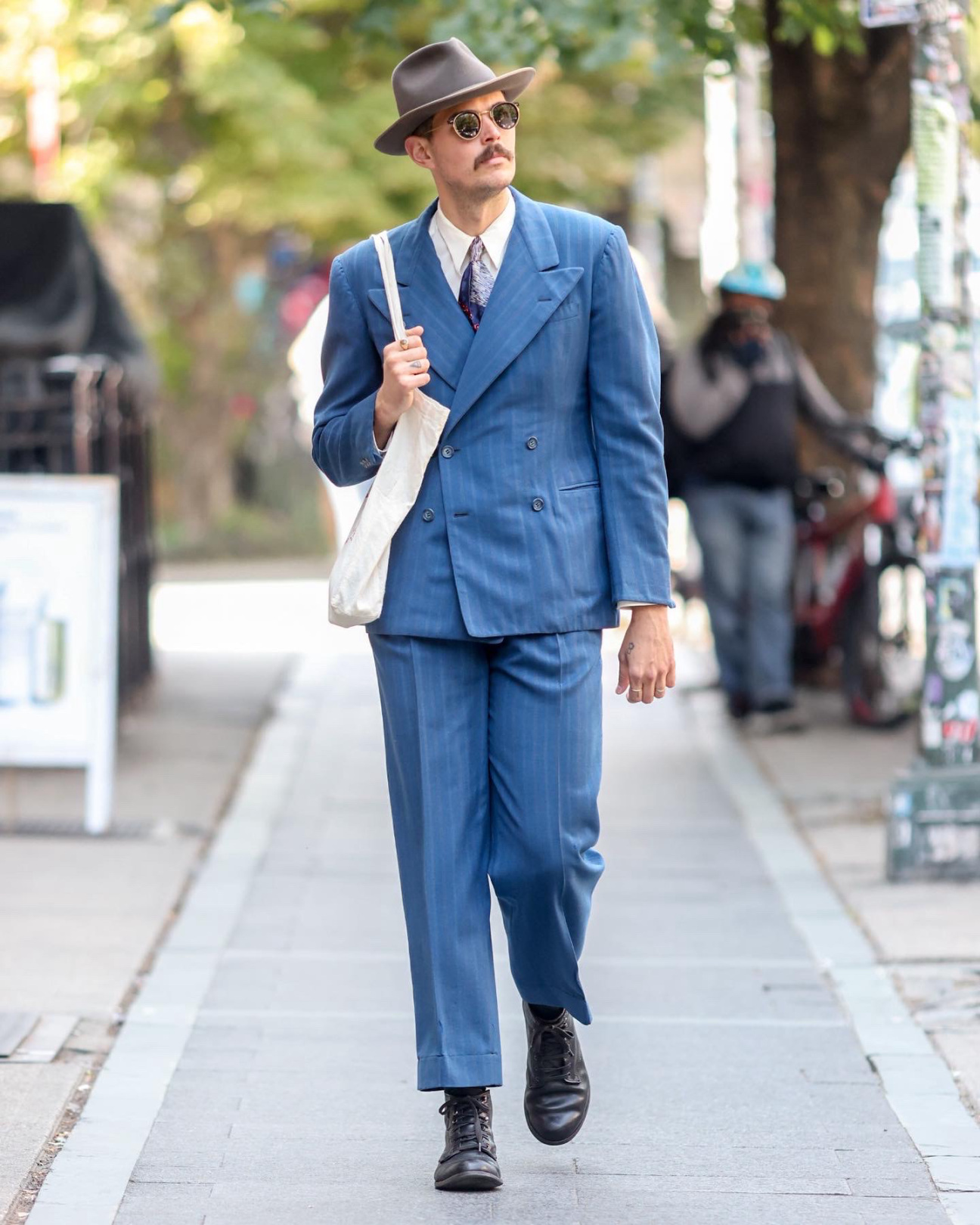
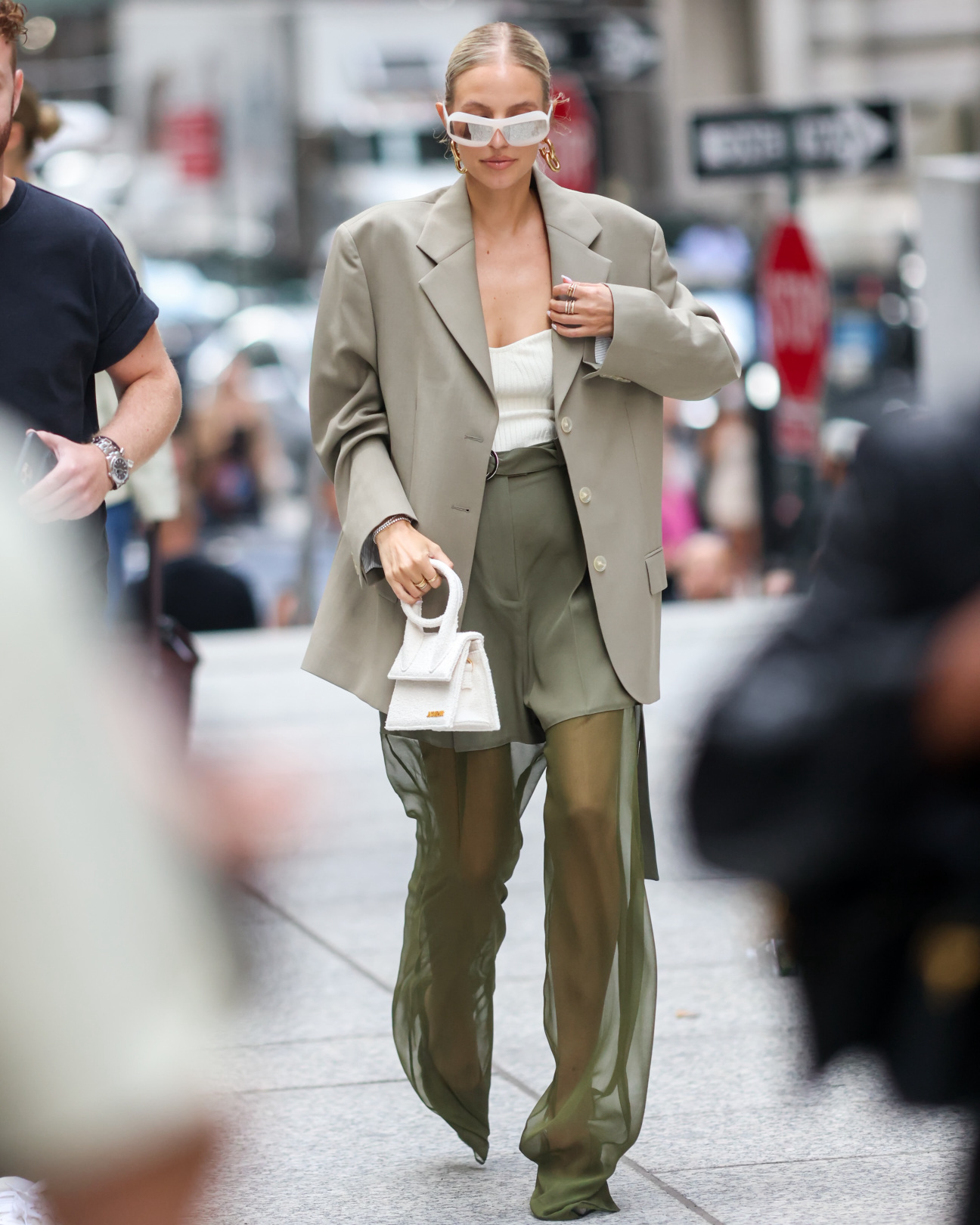
JC: I have to do the ads. I know people get annoyed but it’s like, look, I’m not asking the people for any money. It’s totally free for you to look at it. All I’m asking is now and then, there’ll be an ad on the account, and you have to look at it. Like it if you want.
RQ: Now legal stuff, if Levi’s does that and they’re using it, what’s their obligation to the person in the photo?
JC: To be honest Robbie, I don’t get involved in that stuff. [Both laugh] These are things that I don’t even want to think about. You know what, I’ll start being like, “This is stupid and this is not why I do this.” I’d rather not make a book. I’d rather not make the money. I’d rather not do the ads. I’d rather just stand out here, have fun, interact with people, take photos, and go about my day, and live a happy life.
RQ: You’re just waiting for the next person, huh? When you’re not doing this, we’ll hang out and grab lunch.
At that, Quinn takes his leave and both photographers resume their solo hunts.
SL: Do you bump into other photographers a lot when you’re out here?
JC: More recently, because I’ve been putting myself out on the page more. Before this year, I almost never did. So now people recognize me more. It’s always nice to pick their brain a little bit, see what they’re doing, bounce ideas off each other.
A tall woman in all white begins to approach, now too close for Cirillo to photograph her how he likes, from afar.
JC: Excuse me, oh my god. Would you mind if I got a photo? I shoot street fashion, I’m sorry to take you away from this. Can I get 30 seconds?
They go off around the corner, where Cirillo directs her to back up and then walk towards him, in an imitation of his signature candids.
JC: Now and then, I have to do that.
SL: Have to make it happen?
JC: Yeah, because I hate missing things. Usually, what I do is I say, “Which way are you going? I’m gonna run ahead.” And I’ll run far ahead so they don’t even see me anymore, and then I’ll get it.
SL: Do people usually spot you?
JC: They don’t usually see me. I would say 25 percent of the time they notice me. Sometimes it makes them really mad, because it’s like an invasion of their privacy, but 99 percent of the time if they’re dressed, I’m like, “I’m just appreciating the outfit.” I tell them what I do and it helps when they’re like, “Oh, I know you.” Then they get friendly.
SL: Have you ever tried to do this in another city?
JC: No, I haven’t. I just have a romantic relationship with New York. I’m proud of the city. It’s where I’m from. Not that it needs another light shone on it, but I like that it’s part of my thing that I only shoot New York. I’ll probably move around at some point if I have the opportunity. I’ve never been on an airplane. I’ve almost never left New York.
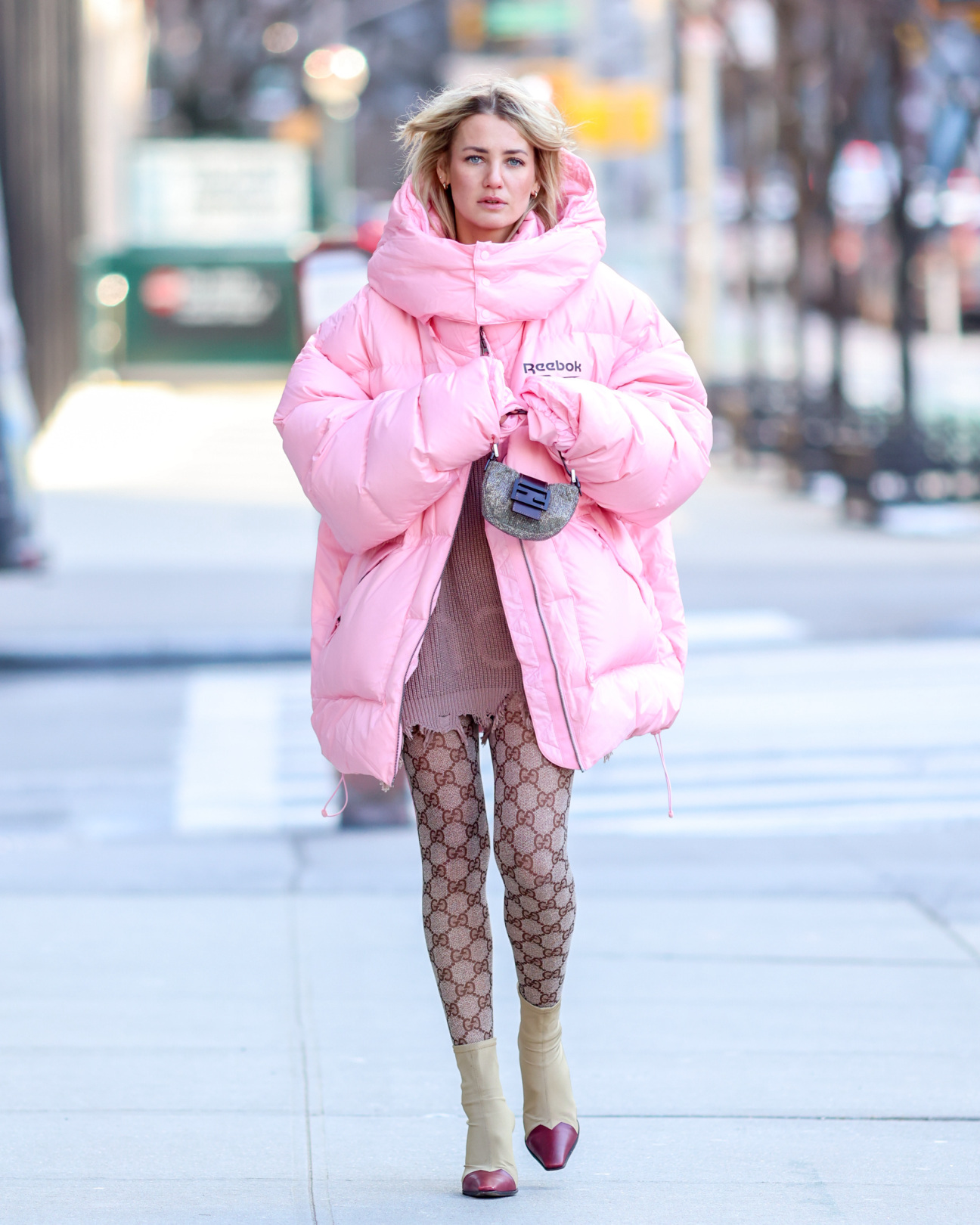
SL: Is there a noticeable difference between here and Brooklyn, or different neighborhoods, in how people dress?
JC: Definitely. I think, and I don’t know if this is controversial, but people in Brooklyn seem to be way more creative. There’s a lot of thrifting in Brooklyn, I’ll say that. You’ve got to be pretty crafty to pick pieces out at a thrift shop and piece them together. In Manhattan, I notice a little more branding, which I also love. I love it all. I think it’s all special and important. But when you do see someone that thrifted an entire outfit and pieced it together in a way that looks like a runway, it’s just something to be admired.
SL: It’s even noticeable if I go uptown versus when I’m down here with all the students.
JC: Every neighborhood changes. Also, a day like today when it’s really sunny out, it’s not as good for me. I rarely shoot people that are in the sunshine. It’s terrible to me. I hate it. So this limits me. I waiting for the sun to either go behind the buildings, or a full cloudy day is my favorite.
SL: As someone who knows nothing about how to take a good photo, I would just assume that it would be the exact opposite.
JC: No, I like it better in the shadows. I work better in the shadows than I do in the sun. Everything’s balanced. In the sun, it casts weird shadows coming down on your face. It makes things unflattering sometimes.
SL: The fashion world is so interesting and strange. Was it a weird entry for you?
JC: Yeah, because it wasn’t my background at all. This is just my thought, but I think that the appeal is that I’m just a regular person photographing what I think looks good in New York. I often don’t know what items are and I’ll get called out on it. It’s not really what I do. I just take pictures of things that look really cool and I’m interested to know what they are. For me, it’s a fresh take. I’ve never claimed to be some fashion guy. It’s photography over fashion for me.
SL: Does that ever happen with celebrities that you shoot? Where people are like, “I can’t believe you don’t know who this is.”
JC: Yes, that does happen. When you’re on the street, everyone’s different and you don’t realize. But, I don’t photograph that many celebrities. I won’t pass up the opportunity to photograph one when I see one, but if they’re not wearing something super cool it’s kind of hard…
SL: If they’re dressed horribly…
JC: It’s still fun to see though and they’re really never dressed horribly. My experience with all the celebrities I’ve shot, they’ve all been really kind and really nice. One of the nicest guys recently, Pete Davidson, was just getting a slice of pizza in Williamsburg. This guy was so nice. I saw a lot of people walking up to him like, “Yo, can I get a photo?” He obliged everybody that came by. I love seeing that.
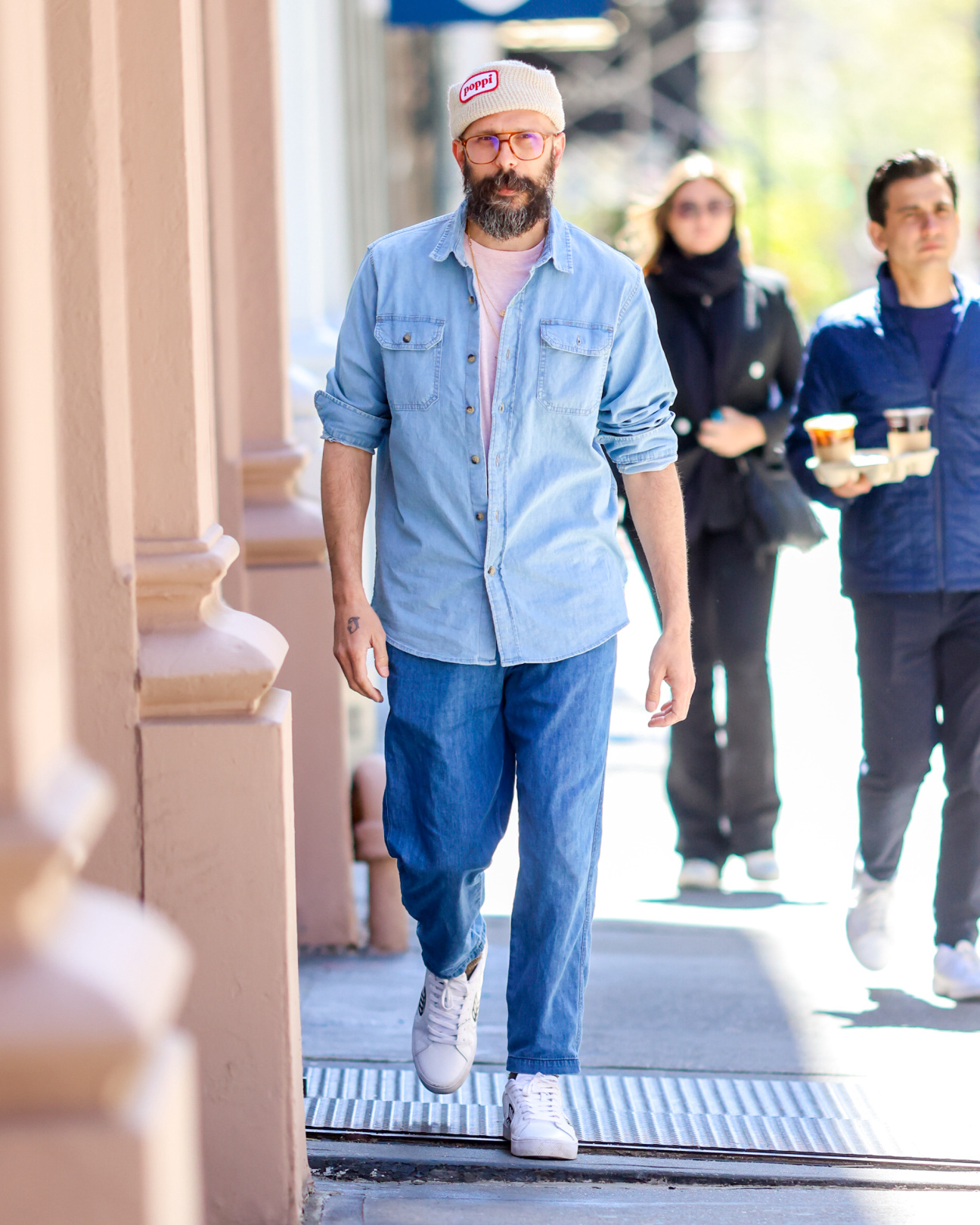
With Davidson in mind, we decide it’s time to finish up our two-person operation, or at least time for me to stop pulling Cirillo away from his fishing. Before I leave, he has one last thing to show me. We find a block with what he decides is the right amount of light and foot traffic. Then, he directs me to back up, just as I had seen him do earlier. Trying very hard to pretend like I don’t know a high definition lens is pointed in my direction, I walk back towards him. Even more delightfully, Cirillo props me up to photograph his own walk. Allegedly, no one has been given the honor of doing so thus far. He places one of my hands under the long lens, and directs the other to rest gingerly on the trigger. “Don’t hold it down or it’ll take a thousand pictures,” he says seriously, like he’s privately afraid I will, in fact, make this mistake despite his warning. As he makes the trek over to his starting mark, I do my best to stay almost inhumanely still. By the time he returns, it feels like the camera has done significantly more work than I have.
“It feels weird,” admits Cirillo. “I got a taste of my own medicine.
Well, it was my pleasure.

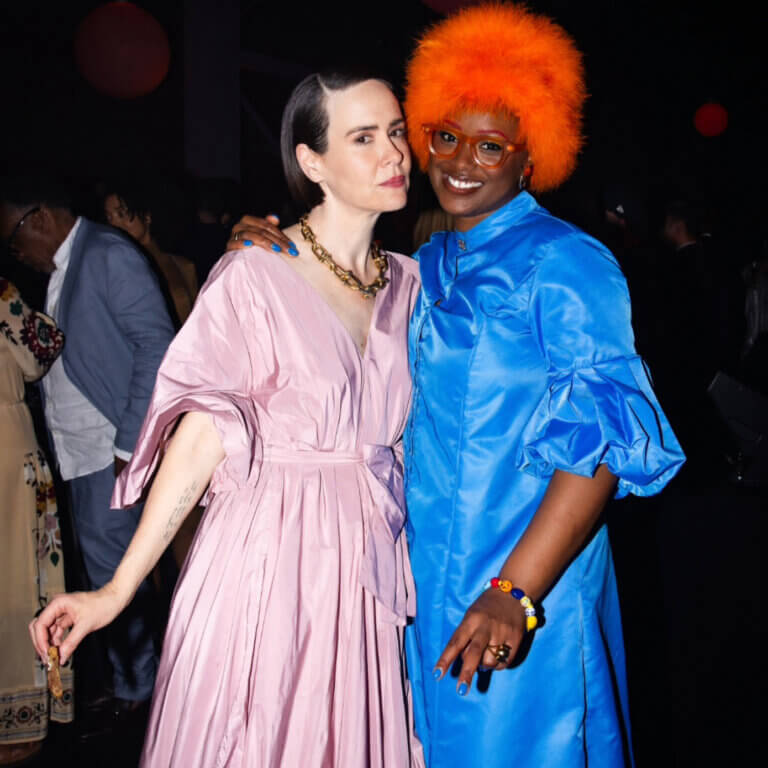
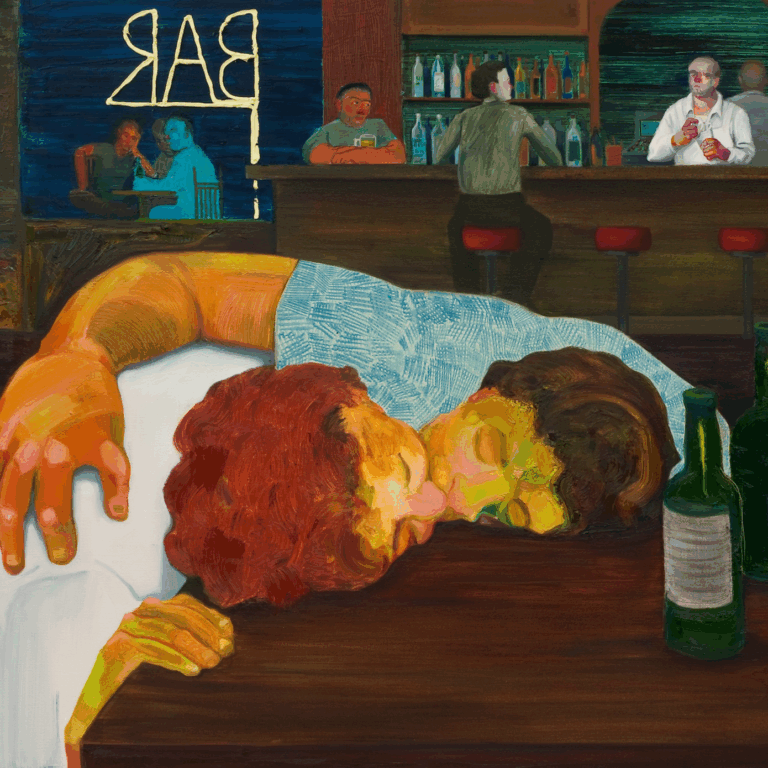
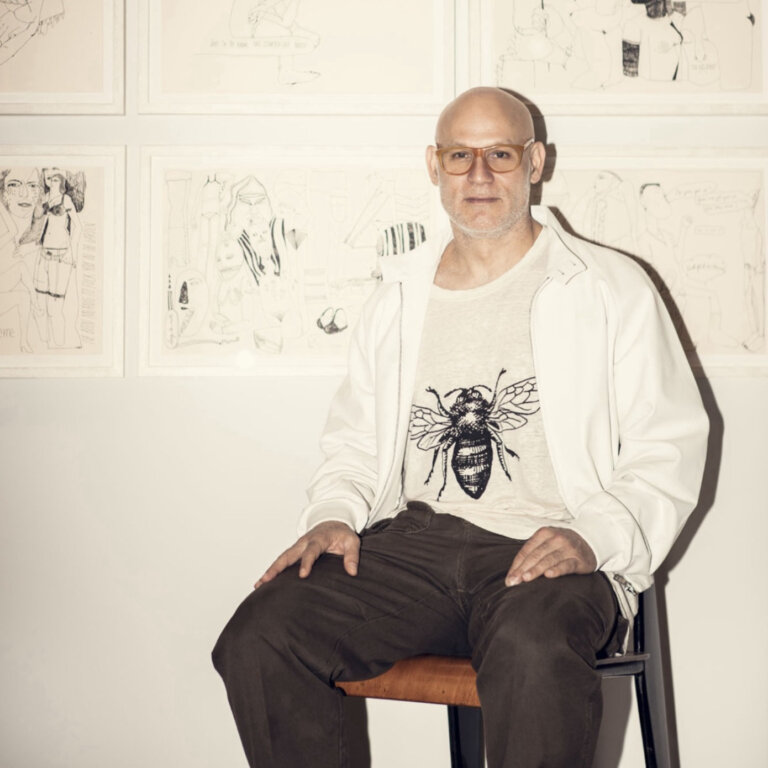






 in your life?
in your life?

